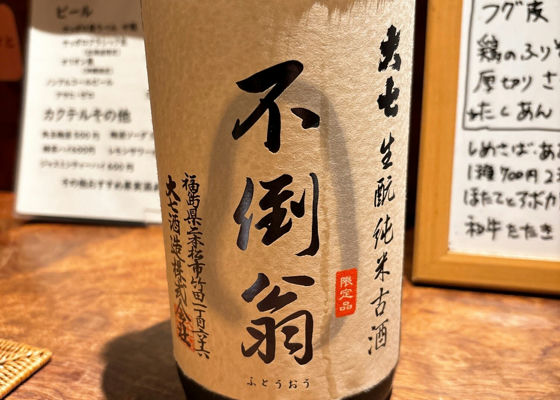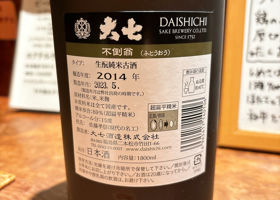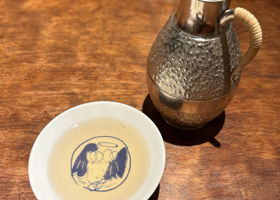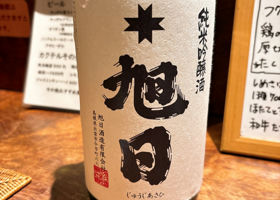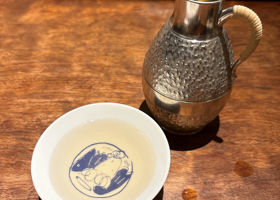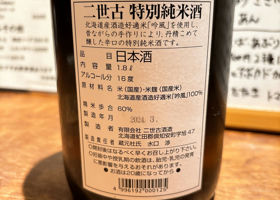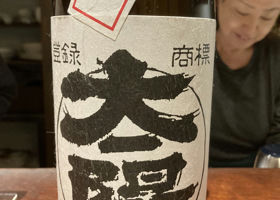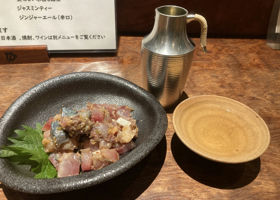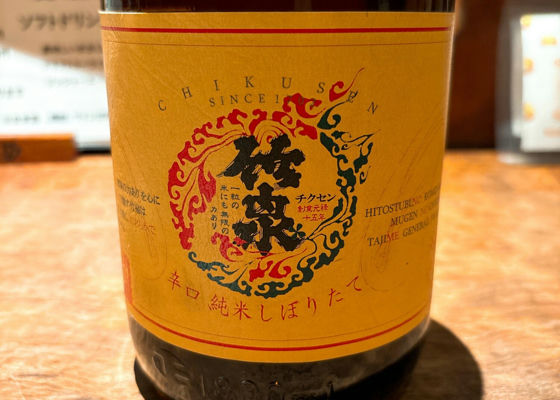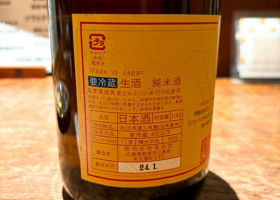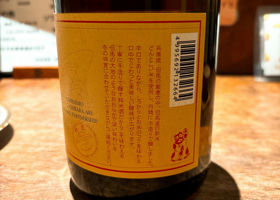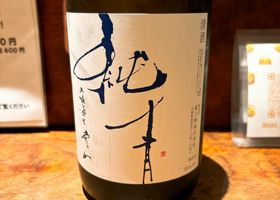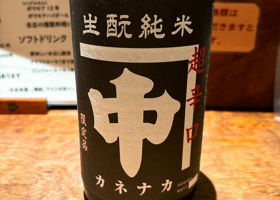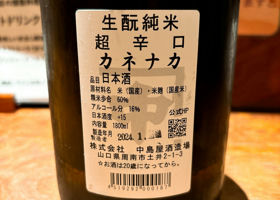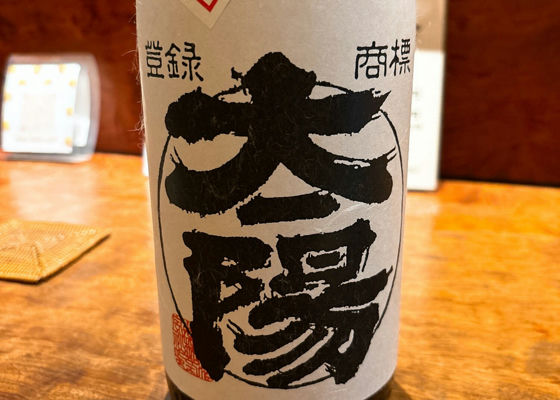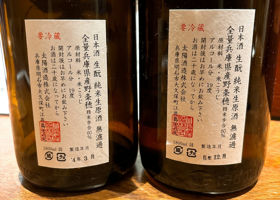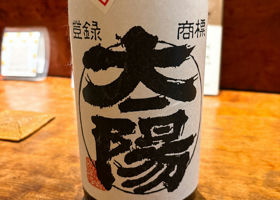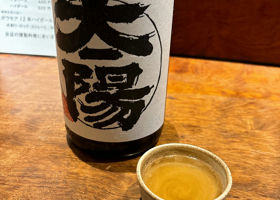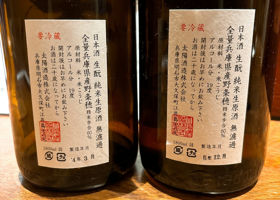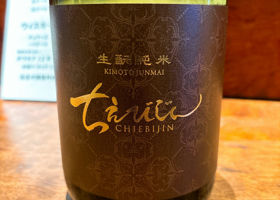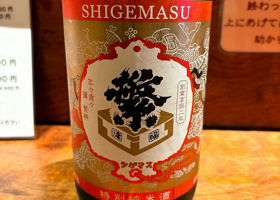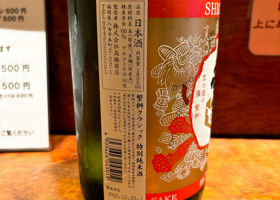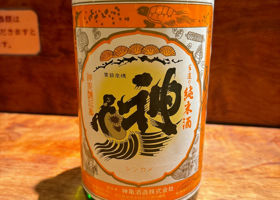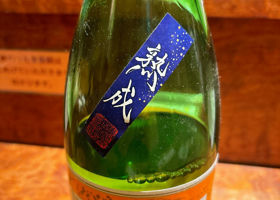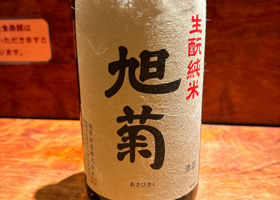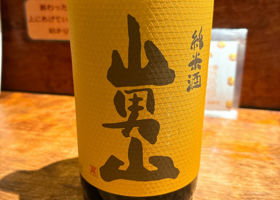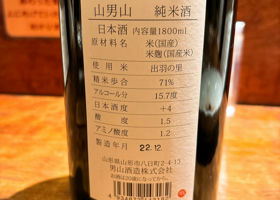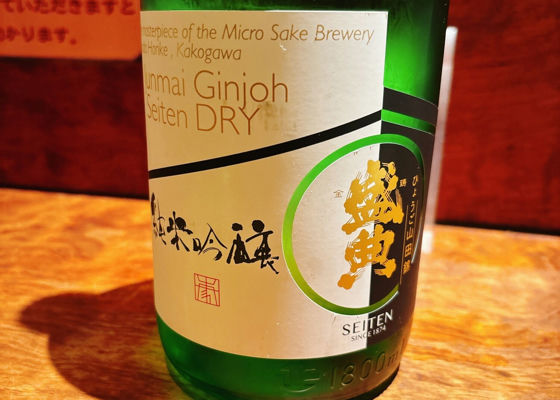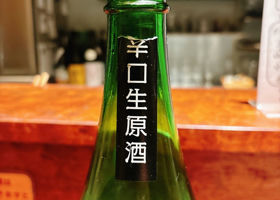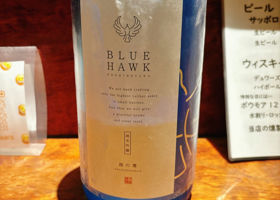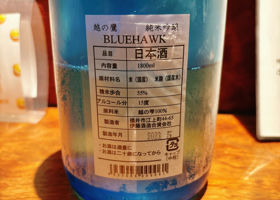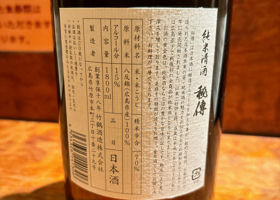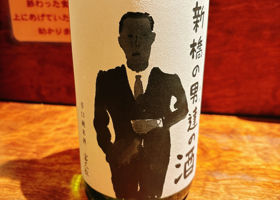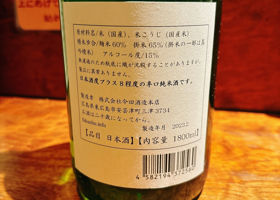Timeline
やす☆2022BY was served warm. The color is pale yellow. It has a mild, mild, candy-like sweetness and a sharpness accompanied by the acidity of the sake. やす☆H29BY was served warm. The color is amber. The color is amber with a strong impression of acidity from the sake yeast.
The production date was July 2022 and the commercialization date was September 2024, so it must have been bottled and kept for about two years before being sold. やす☆2014BY was served warm. Light yellow in color.
It has a mild, gentle caramelized taste and sharpness. It is a long ripe sake with a surprisingly gentle taste. やす☆I was told that it can be served lukewarm or hot, so I ordered it hot. The color was a pale yellow.
It has a slightly candy-like sweet flavor with a mellow matured feel and a jungin-like gentleness that is irresistible. It is a little blurred when it is warmed up or cooled down. やす☆As the name suggests, it has a clear, crisp, dry mouthfeel, but it also has a subtle rice flavor. ゆーみんSeason of lukewarm sake
Horse mackerel nameko, homemade pickled vegetables
We started with a strong condiment, Namenro, and a bottle of raw sake, Taiyo.
The simple aroma of rice stands out and gives it a Japanese boyish flavor.
Delicious. やす☆It has a mild candy-like sweetness and flavor when heated, and is very tasty. やす☆It has a cute sweet flavor with a hint of freshness and a strawberry-like sweetness that is typical of Aizan. It is rather light and easy to drink. やす☆It has a refreshing umami flavor and is crisp and clean with the acidity of the sake yeast. It is an easy-to-drink mid-meal sake that is not too sharp for its sake meterage of +15. やす☆Sun drinking comparison. This one is bottled at R5.
Warmed to 52°C, it has a candy-like sweetness and a strong sense of sharpness. やす☆Sun drinking comparison. This is R4 bottled.
The color is slightly brown? It has a soft caramel-like sweetness due to aging at room temperature, and has a sharp taste. やす☆First time to drink Chiebijin at room temperature.
It has a classical flavor that is not typical of Chiebijin, which has a modern image, and a sharpness with the acidity of a traditional sake.
It is a heavy food sake that overturns the image of Chiebijin in a good way. 70% polished sake with a soft mouthfeel, which is typical of Chiebijin. やす☆It's been a long time since I've had a Shigemasu. As the label implies, it has a classical, moderate flavor. やす☆Bottled May 2019. Warmed, mellow, soft chocolate? Candy? It has a mild, soft chocolate? やす☆Warmed H29BY. The mild flavor is impressive and would be good warmed up to lukewarm. The taste is gentle and elegant despite being a matured sake, which is typical of Asahi Kiku. やす☆Tasted again at Anty on 10/13. Warmed up, it has a sweet umami taste and sharpness with a mildly matured taste. やす☆It has a mild, soft flavor and a strong sharpness when warmed. Good balance when cooled. やす☆The first Morinori.
It has a clear, crisp acidity and a sharp finish. Certainly dry. やす☆This is the first Koshinotaka.
It seems to be a summer sake, but perhaps because it was bottled about a year ago, it has a slight sense of maturity and a rather robust flavor. It was served cold, but I think it is better served at room temperature or warmed. やす☆2017BY warmed up. It is hard to tell, but the color is probably golden.
It has a savory matured taste with a thick and sharp taste, which is typical of Taketsuru. やす☆Tasted again at Ante on 7/6. Impression unchanged. やす☆Warmed to lukewarm, it has a soft umami flavor with a hint of rice sweetness and a nice sharpness. Probably in the strike zone for this temperature range. RecommendedContentsSectionView.title











